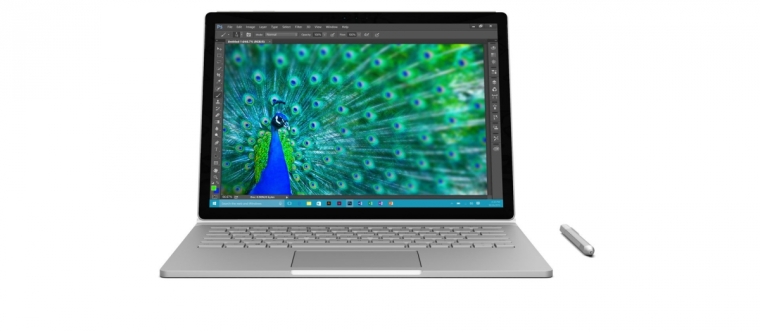Microsoft Surface Book 2 release date, specs news update: Laptop likely to arrive in March 2017; Microsoft Surface AIO PC an alternative choice?

The highly anticipated Microsoft Surface Book 2 has been a subject of numerous rumors and speculations all over the Internet for quite some time now. New speculations suggest that the device will come out anytime in 2017.
Previous reports suggested that the next generation Surface Book will come out in 2016; however, due to hardware and software issues, the laptop has been delayed. Interestingly so, Microsoft is said to be releasing a new Microsoft Surface AIO PC this year, which is said to be an alternative choice for fans who are waiting for the Surface Book 2 to come out.
Microsoft's decision to release a somewhat similar device is said to be a marketing strategy to make sure consumers, who are shopping for a new laptop or PC, will still include the Surface brand in this choices.
There are reports saying that the American software giant is waiting for Intel's next-generation computer processor known as Kaby Lake. The hardware is said to be the one powering up the upcoming Microsoft Surface Book 2. The device is also speculated to come out with the much anticipated Windows 10 Redstone 2 operating system, which is still under development.
If rumors prove to be true, the Microsoft Surface Book 2 will arrive at the end of the first quarter next year. Its impressive specs and features will surely be revolutionary as Microsoft is putting everything they got on this upcoming laptop.
Meanwhile, according to a report by Christian Today, one of the features that will be highlighted once the laptop becomes official is its 4K capabilities. It is also said to have a whopping 32 GB of RAM to be paired with the Kaby Lake processor from Intel. The upcoming device is also rumored to carry at least 1 TB of internal storage capacity.
 Christians don't have to affirm transgenderism, but they can’t express that view at work: tribunal
Christians don't have to affirm transgenderism, but they can’t express that view at work: tribunal Archaeology discovery: Medieval Christian prayer beads found on Holy Island
Archaeology discovery: Medieval Christian prayer beads found on Holy Island Presbyterian Church in America votes to leave National Association of Evangelicals
Presbyterian Church in America votes to leave National Association of Evangelicals Over 50 killed in 'vile and satanic' attack at Nigerian church on Pentecost Sunday
Over 50 killed in 'vile and satanic' attack at Nigerian church on Pentecost Sunday Ukrainian Orthodox Church severs ties with Moscow over Patriarch Kirill's support for Putin's war
Ukrainian Orthodox Church severs ties with Moscow over Patriarch Kirill's support for Putin's war Islamic State kills 20 Nigerian Christians as revenge for US airstrike
Islamic State kills 20 Nigerian Christians as revenge for US airstrike Man who served 33 years in prison for murder leads inmates to Christ
Man who served 33 years in prison for murder leads inmates to Christ


 Nigerian student beaten to death, body burned over ‘blasphemous’ WhatsApp message
Nigerian student beaten to death, body burned over ‘blasphemous’ WhatsApp message 'A new low': World reacts after Hong Kong arrests 90-year-old Cardinal Joseph Zen
'A new low': World reacts after Hong Kong arrests 90-year-old Cardinal Joseph Zen Iran sentences Christian man to 10 years in prison for hosting house church worship gathering
Iran sentences Christian man to 10 years in prison for hosting house church worship gathering French Guyana: Pastor shot dead, church set on fire after meeting delegation of Evangelicals
French Guyana: Pastor shot dead, church set on fire after meeting delegation of Evangelicals ‘Talking Jesus’ report finds only 6% of UK adults identify as practicing Christians
‘Talking Jesus’ report finds only 6% of UK adults identify as practicing Christians Mission Eurasia ministry center blown up in Ukraine, hundreds of Bibles destroyed: 'God will provide'
Mission Eurasia ministry center blown up in Ukraine, hundreds of Bibles destroyed: 'God will provide' Church holds service for first time after ISIS desecrated it 8 years ago
Church holds service for first time after ISIS desecrated it 8 years ago Burger King apologizes for 'offensive campaign' using Jesus' words at the Last Supper
Burger King apologizes for 'offensive campaign' using Jesus' words at the Last Supper Uganda: Muslims abduct teacher, burn him inside mosque for praying in Christ’s name
Uganda: Muslims abduct teacher, burn him inside mosque for praying in Christ’s name